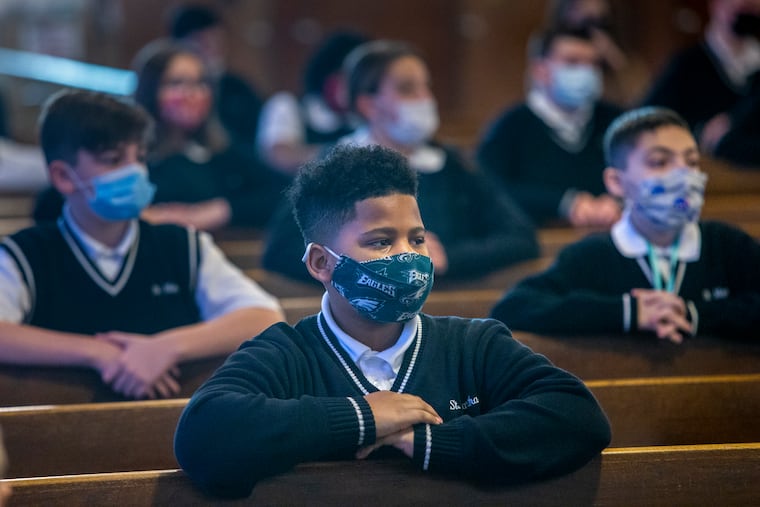Q&A: Children may be afraid to remove their masks. These steps can help reassure them.
For more than a year, kids have been told masks keep them safe from an invisible threat. Now they’re being told that masks are no longer needed.

The region is reopening and mask mandates are relaxing in many places. But for children, masking continues in schools and for many childhood activities. As things return to a sense of normalcy, parents should be prepared for the potential social and emotional impact of transitioning kids away from masks.
Developmentally, it may be hard for children to make this transition; for more than a year, they have been told masks keep them safe from an invisible threat. Now they’re being told that masks are no longer needed from that same threat. Children may feel anxious or unsafe at the thought of removing their mask permanently, or they may feel confused as to why some adults must continue to wear theirs, or why they are continuing to wear theirs in school and not in other places like the supermarket. Some children may decide they want to keep their masks on. So what can parents do to support kids through this transition?
Be patient and assure them they are safe. If a child is having difficulty letting go of their mask, take small steps to reassure them that it’s OK to take it off. Try having him or her remove it during a specific time (for example while playing outside or indoors with close friends) and then distract them with fun activities. Then, gradually increase that amount of time.
It’s better to remove the mask step by step if children seem overly distressed. This is also a good reminder that adults’ anxiety can also often be felt by children. Parents should take steps to manage their own anxiety about post-pandemic life, including mask wearing, to help their children feel secure.
For children who are shy or have social anxiety, the mask may have offered another level of security (think of “hiding” behind sunglasses). Removing the mask may reintroduce some of that anxiety, so it’s important to address those social skills directly. With continued practice — such as modeling appropriate social interactions, practicing initiating and maintaining conversation, and working on nonverbal gestures — that social anxiety will likely decrease.
Many children are also aware of the divide that mask wearing has caused. They may have seen friends’ families adhering more or less strictly to mandates than their own, so it’s important for parents to model some grace and acceptance toward those who may still choose to wear masks during this transition.
Masks have been synonymous with safety, so some children will need a gradual, supported process to feel comfortable abandoning their masks. With a little patience, reassurance and skill development, we will soon see our children’s smiling faces again.
Jessica Glass Kendorski is an associate professor and chair of the department of school psychology at the Philadelphia College of Osteopathic Medicine (PCOM).